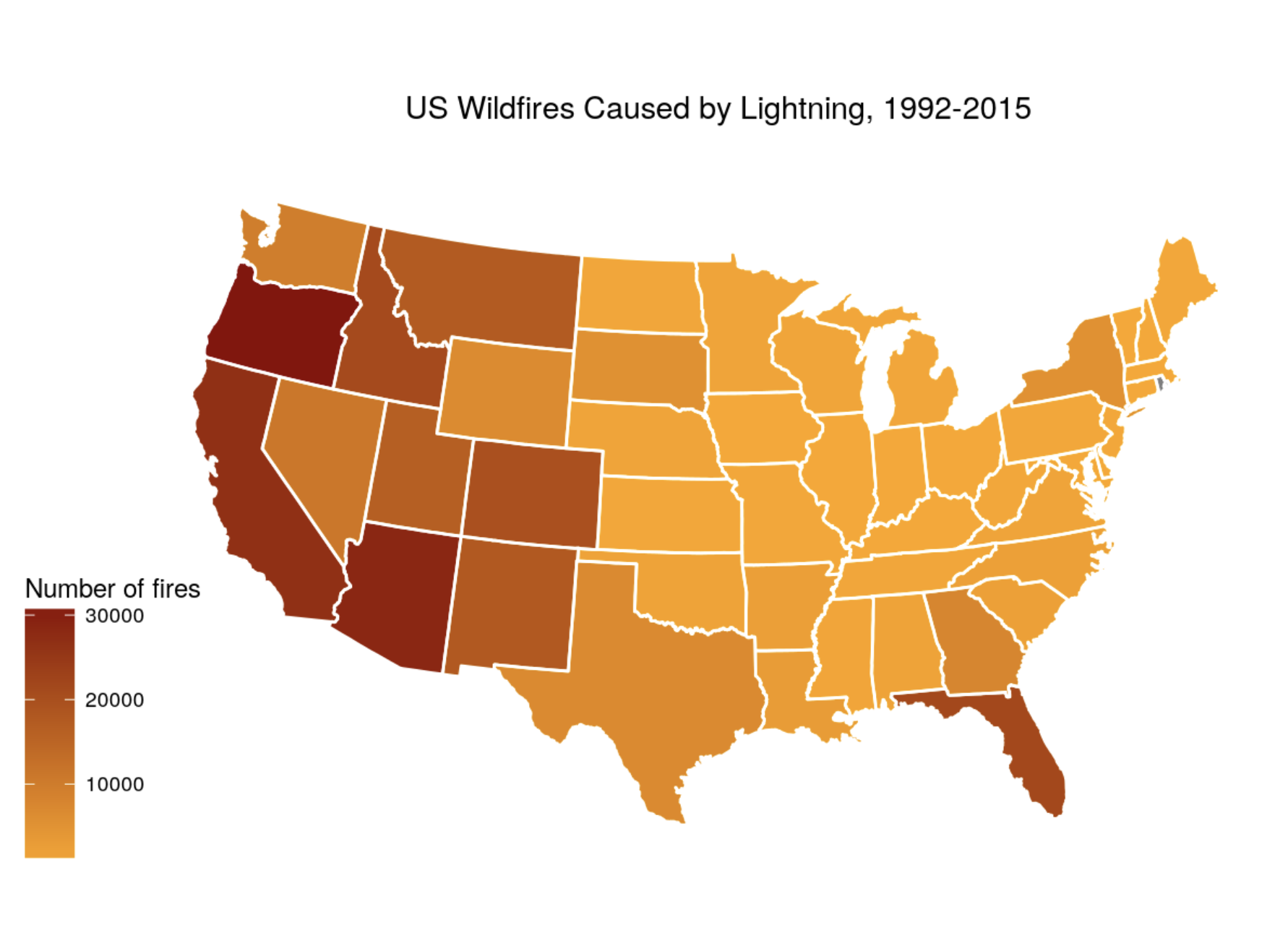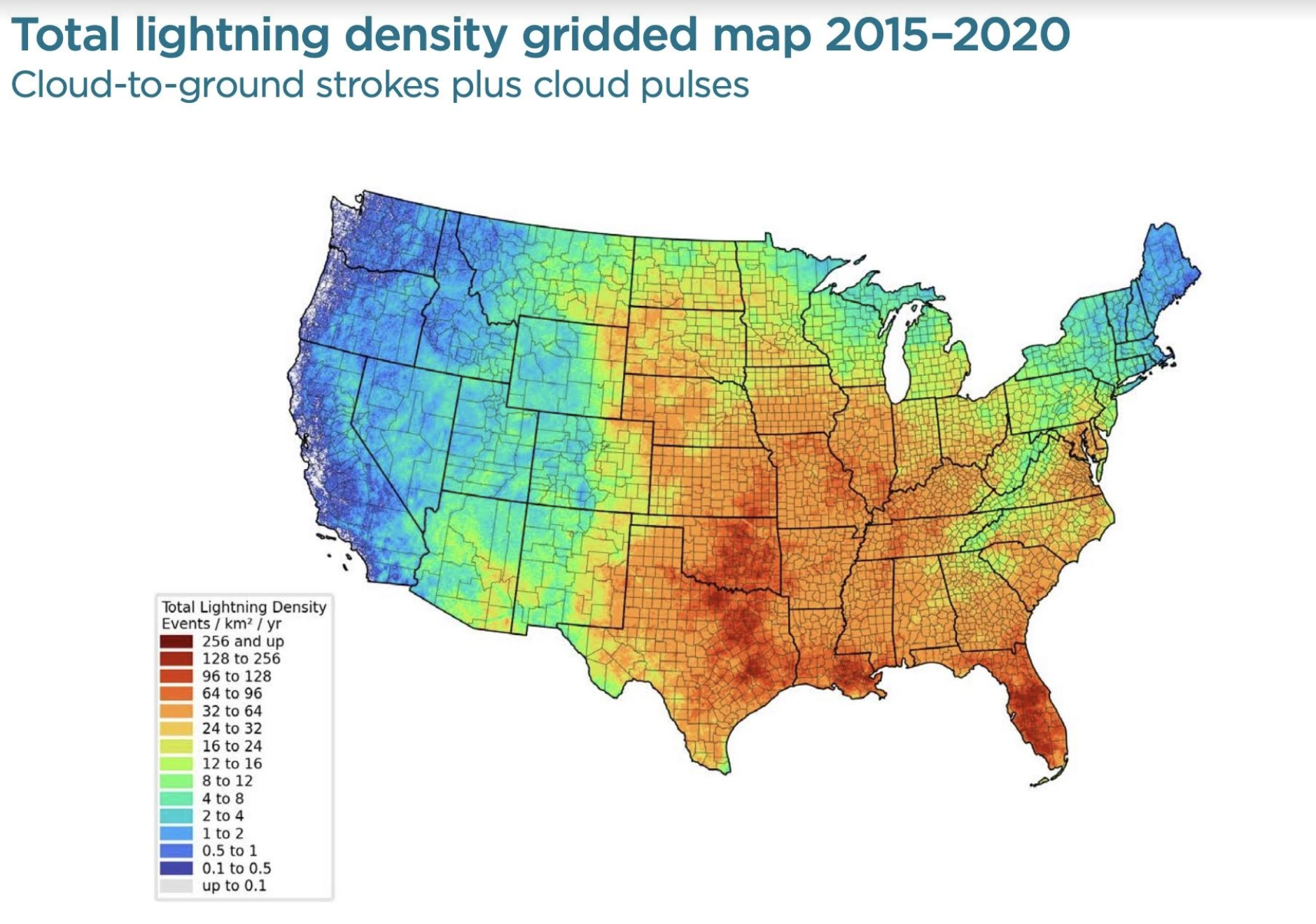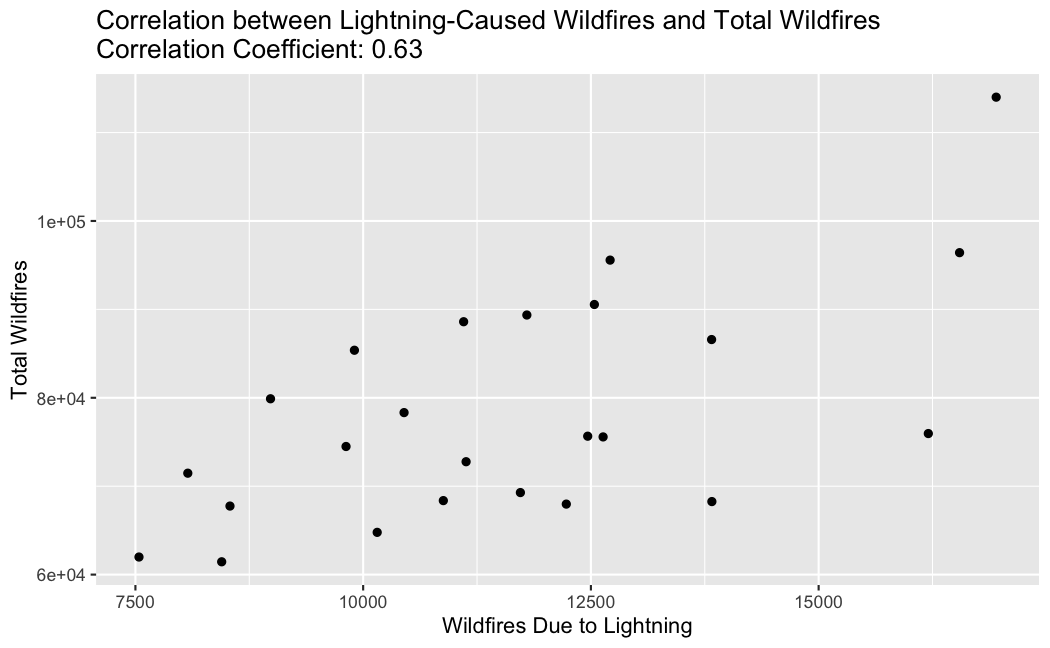Chapter 4 Lightning
Ecem
4.1 What is lightning?
Lightning is a climate activity caused by the imbalances among storm clouds and the ground or inside the clouds. The air around the lightning can be heated to temperatures five time shotter than the sun’s surface by the lightning’s flash (National Geographic, 2021).
4.2 How does it relate to climate change?
They are both affected by each other, there is not only a one-way interaction. First of all, lightning is crucial for the nitrogen cycle, atmospheric nitrogen is being converted into compounds used by animals and plants by lightning. Secondly, it helps the climate, and atmosphere by playing a role in formatting the clouds. As lightning helps produce aerosol which is important for the arrangement of clouds. It can be implied that clouds are a determinant factor for global climate patterns and affect the climate whereby trapping heat and cooling effect. Thirdly, there can be some complex chemical reactions caused by the discharge of nitroxides and these types of particles which are byproducts of lightning.Inversely, lightning but mainly its patterns and activity such as its frequency, intensity, and distribution are affected by climate change. To clarify, thunderstorms can be said as the power plant of lightning, and increased atmospheric instabilities caused by climate change can result in thunderstorms. Apart from that, altered rain patterns resulting from climate change area ffecting thunderstorm activity likewise lightning activity due to the change in moisture in the atmosphere. Moreover, determinant factors of formation in thunderstorms such as concentration of water vapor and other trace gasses which are affected by climate change also influence lightning activity.
4.3 How does lightning relate to wildfires?
There are several ways lightning can affect wildfires directly or indirectly. There are three types of lightning-caused fires: surface fires, crown fires, and ground fires. To begin with,when the ground or the vegetation is hit by a lightning bolt which produces sufficient heat to set dry plants on fire, lightning-caused wildfires occur. Being in dry conditions and regions with frequent lightning occurrences, wildfires are more likely to happen. In addition, to wildfires occur, there must be an ample amount of combustible material present like dry grass, leaves, and branches. Arid areas are also more likely to be at risk of wildfires when lightning strikes. Also, thunderstorms can widen the area of wildfires because of the erratic wind pattern caused by them. When the relationship between lightning and wildfires in the United States is examined, it is important to begin the discussion by considering the country’s prevailing lightning intensity. After systematically organizing the existing data and modifying it according to the desired parameters, lightning emerges as a prominent catalyst among the causes of forest fires occurring across America. The historical prominence of lightning-induced fires in US history is notable, and as USDA (United States Department of Agriculture)stated, The Rim Fire is commemorated as the third largest wildfire in California history as an exemplary manifestation of lightning-triggered fires (n.d). However, for the purpose of examining the relationship between lightning and forest fires, the limitation faced is the lack of accumulated data on lightning. For this reason, it is far from possible to present a clear and understandable relationship in a table format. However, if we had a comprehensive dataset of state-based lightning events numbers and intensities for the period 1992 to 2015, it would be possible to create a correlation table comparing these lightning events with the total number of fires from the same period. Unfortunately, in the absence of such detailed data, an alternative route is suggested.According to this alternative approach, a relationship graph can be created to explain the relationship between fires caused by lightning and the total number of fires that occurred in a given period. Moreover, we can also graph a correlation graph between the total number of wildfires and the lightning- caused wildfires.
4.4 Analyzing the Data:


library(ggplot2)
library(dplyr)
library(readr)
# Read data from CSV
setwd("/Users/ecemsomyurek/Downloads")
wildfires <- read_csv("USWildfires.csv")
# Create the plot
print(wildfires %>%
group_by(STAT_CAUSE_DESCR) %>%
summarize(n_fires = n() / 100) %>%
ggplot(aes(x = STAT_CAUSE_DESCR, y = n_fires, fill = 'red')) +
geom_bar(stat = 'identity') +
scale_fill_identity() +
labs(x = 'Causes of Wildfires', y = 'Number of Fires (hundreds)', title = 'Wildfires in US & Causes of the Wildfires between 1992-2015') +
theme(axis.text.x = element_text(angle = 90)))

The originally designed dataset was created to highlight the importance of examining lightning as a cause. When we classify the causes of forest fires using the data obtained on Kaggle and rank them according to frequency, we can say that lightning is among the 4 most common causes by using this code. Following this step, we want to dive into the degree of association between lightning and wildfires on a state-by-state basis, particularly in theUnited States. However, this goal cannot be achieved due to the lack of cumulative lightning data. Instead, we compare the lightning intensity map for 2015-2020 presented by VAISALA with the frequency map for lightning-induced wildfires across the United States from 1992-2015 gathered from Kaggle. A notable limitation of this dataset is that the data were collected over different years. However, this data has the potential to offer valuable insights into correlation; We can examine the frequency of wildfires in areas where lightning is common.When examined, we observe that the state of Florida, known as the “lightning capital”, has a significant density on the lightning-caused wildfire frequency map. However, the west coast region does not follow the same pattern. While there may be different factors underlying this phenomenon, we refrain from claiming that wildfire frequency and lightning frequency are correlated on a regional basis. To create a more accurate correlation scatter plot, we need both the lightning frequency data and the number of wildfires caused by lightning for the same years. However, since we lack the lightning data, we will focus on examining the correlation between total wildfires and lightning-caused wildfires which also gathered from Kaggle. Each point on the scatter plot represents a specific year. After plotting the scatter plot,when we look at the correlation coefficient, which is 0.63, we can determine the direction and strength of their relationship. In simpler terms, the scatter plot helps us visualize the relationship between the total number of wildfires and the number of wildfires caused by lightning for each year. The correlation coefficient of 0.63 indicates that there is a moderately positive linear relationship between these two variables. This means that as the total number of wildfires increases, the number of wildfires caused by lightning also tends to increase. The strength of the relationship suggests that they are somewhat correlated, but not perfectly so.
4.5 How does lightning affect climate change in terms of wildfires?
As it is discussed before, lightning is likely to cause a wildfire. In the case of wildfire, carbon dioxide is being released which lends to greenhouse gas emissions and further worsens climate change. Secondly, it is undeniable that there are fire-adapted ecosystems that periodic fires help them maintain a healthy and bio diverse ecosystem. Therefore, changing the patterns of the lightning also affects the ecosystems by means of makeup and arrangement. Thirdly,particulate matter, such as black carbon and aerosols, is also emitted during wildfires. These particles can absorb sunlight and heat the atmosphere, resulting in the “aerosol effect” or localized warming. In addition, carbon uptake and release in the ecosystem can be influenced by the altered ecosystems herewith the removed vegetation and changed carbon storage capacity of landscapes caused by wildfires.